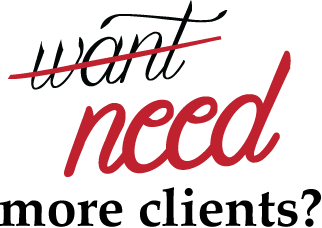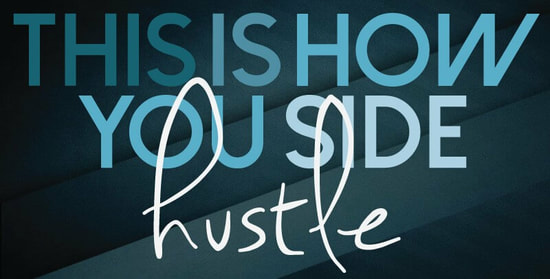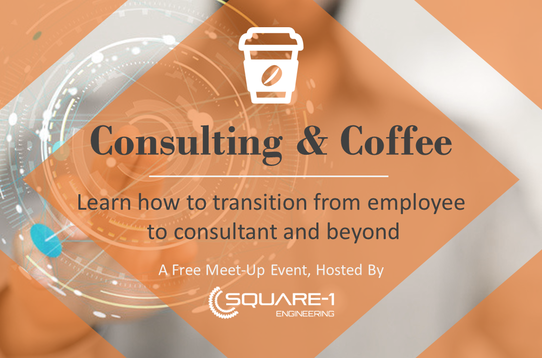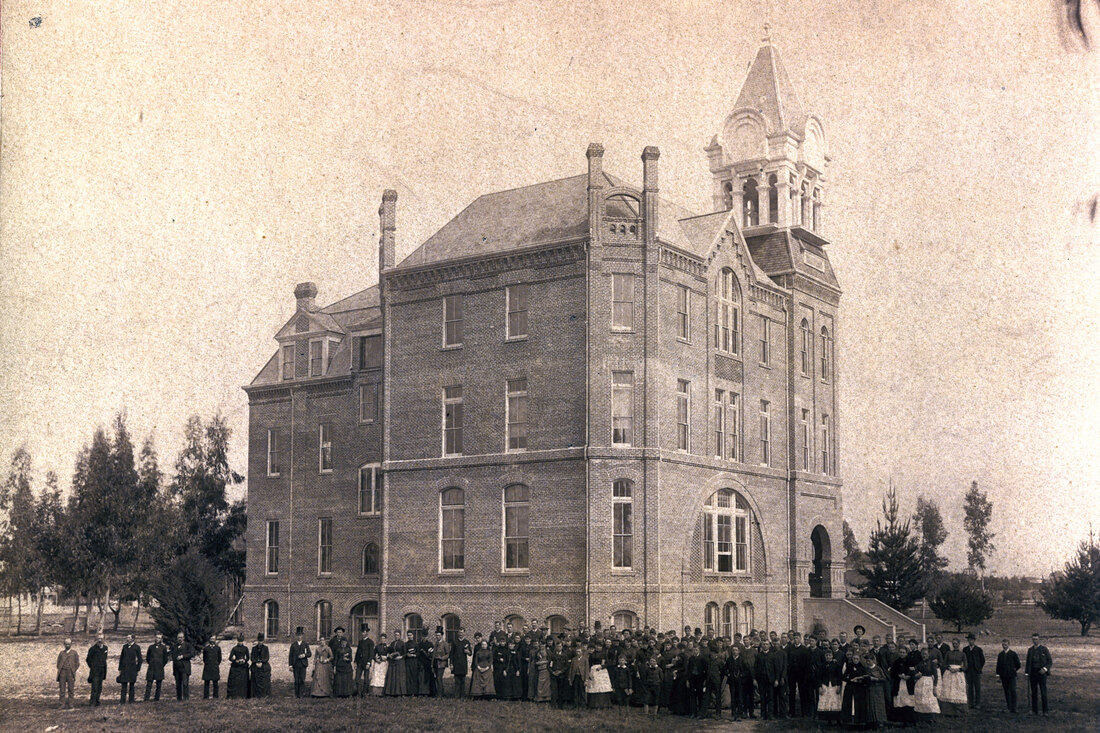Medtech Snapshot: Fundraising and the Sales Funnel with Scott Nelson, CEO Fastwave Medical1/15/2024 Medtech Snapshot episode #22 features Fastwave Medical's CEO Scott Nelson sharing insights on the impact of using the 'sales funnel' process for medical device fundraising purposes. Listen how Scott's approach to fundraising starts off by casting a wide net via branding and mission/ story telling efforts then intentionally narrows the funding field to a smaller audience of potential investors which are aligned with his company's mission. Want more info? Check out Square-1's other Medtech Snapshot episodes at https://www.sqr1services.com/white-papers/category/snapshot Learn about Fastwave Medical's mission and product offering at https://www.fastwavemedical.com/ The quickest way to overcome a business challenge is to get help from those who are experienced in besting your beast! The team at Square-1 Engineering is comprised of a variety of technical and project management professionals who are subject matter experts in the areas of NPD, Quality, Compliance and Manufacturing Engineering.
Learn more about how we can solve your work and project problems today to get you back on track! VISIT HERE
0 Comments
As a child I dreamt of being a business owner. While the other kids in the neighborhood were talking about being pro athletes I always imaged myself starting a business. At the spry age of 10 I opened my first business in the early 90's in my parents basement in rural New York selling used skateboard parts. It was exciting! I had a business sign which proclaimed ‘Sk8 Parts’, a rack to display my shoddy products for sale and even a chair to sit on while waiting for the sales to come rolling in. After a summer being in business I had only made one sale a set of dirty and worn out skateboard wheels for a measly fifty cents to a kid down the street. That sale bought me a pink panther ice cream from the neighborhood ice man. While the business didn’t rocket me to instant success like I had envisioned I was hooked on the idea of being a business owner in the future so I could buy the whole ice cream factory, not just one pink panther. As I got older I tried my hand at inventing all sorts of things, products that I thought would get me rich, if I could only figure out a way to sell a few million of them. First it was a gaming chair, then workout towels and even a handheld flashlight projector. My entrepreneurial dreams ended at the time with a website I tried to start in 2006 that would allow people to ask questions and get advice based off real life business situations they were dealing with. That was a $2k boondoggle which went nowhere.
It wasn’t until the summer of 2015 that I would find my way, diving head first into entrepreneurship by starting Square-1 Engineering. Thankfully I had a lot of help from many close people around me (wife, parents, friends) who all were incredibly supportive. Four years into my current entrepreneurial journey I’ve learned and experienced firsthand many things which have helped me navigate my way to present day. Of all these experiences, learning lessons and awareness gained there are eight which have brought about the biggest positive impact in helping me weather the entrepreneur start up storm: 1.Get A Mentor This is the single second best decision you’ll ever make in business. The first best decision is to become an entrepreneur. Mentors have experience which you can learn from helping you avoid mistakes along the way. 2.Support Gets You Over The Hump Make sure those close to you understand your vision and support it. They don’t have to buy in 100% but if it’s you against the world there are going to be some very long nights in store. If you are married it’s vital your spouse understands the opportunity and supports it, even in the down times. 3.Some Things CAN Wait Some people will tell you it’s important to write a business plan, vision, mission, blah blah blah, right away. Unless you’re in a situation where you need to ask for capital to start the business the best thing to do is put those things aside and focus all your efforts on how to make money. Ultimately being an entrepreneur means you’re selling something to someone so the more time you spend on how you’re going to get paid for the product or service you’re providing the better off you’ll be. 4.You Can’t Be Everything to Everyone I failed miserably here. When I did start to get customers I tried to offer them everything under the sun in order to get their business. Some times it worked, often times it created a nightmare for me as now I had to deliver the goods. Never over promise, you’ll most likely end up under delivering. Find one or two areas you can become an expert in, one or two problems you can solve for your customers. Do that and only that before you start getting into other areas of opportunity. 5.Having a Plan-B is Dangerous I’ve read countless articles about “the power of having a ‘plan-B’ ” or an alternative course of direction. I hate that advice. As an entrepreneur if you don’t believe in what you’re doing and have a plan-B set up in case you fail you’re almost destined to set yourself up for disappointment. I’m not saying it’s not important to plan ahead for bumps in the road but if you’re going to start a business that should be your one and only focus. Anything other than a mentality of success has no place for you. Visualize to materialize. 6.Outsource Work The first several months I attempted to handle all the accounting and finance portions of the business only to realize two things: 1 – I’m not good at it nor do I like it; 2 – I created more problems than I remedied. Best advice I got was to pay the money to get a reliable CPA that understood my business and could help scale it up by making good decisions. Best money I’ve ever spent was a CPA. 7.The Power Of Saying ‘No’ Crucial to your success as an entrepreneur is the ability to politely and professionally say ‘no’. Similar to ‘you can’t be everything to everyone’ saying ‘no’ is harder than it sounds. Naturally you want to say yes to everyone, making everyone around you happy, especially if it’s a customer. Unfortunately, when we do this we get pulled in a hundred directions which causes us to deviate from our destined course. If you are asked to do something and it doesn’t align with your top 2 or 3 priorities politely decline and thank the person for the opportunity to be considered, even if it is a customer. 8.Breathe, It’ll Be Okay Very few things in life actually have the ability to stop you from moving forward in your new business. When bumps in the road momentarily derail you (you will experience plenty of bumps along the way) take a deep breath and be thankful for the opportunity to learn and grow as a professional. Stephen Covey put it best when he gave us the 90/10 principle: “10% of life is made up of what happens to you, 90% of life is decided by how you react.” – Stephen Covey Think back to the last time you experience a moment where during a conversation an elongated pause or silence occurred between you and the other person, inevitably leading you to think in the moment “this is awkward”. Perhaps you were in a social setting, on a date, in a debate, or even at work. Whatever the situation may have been it’s highly likely you did or thought about saying something in moment just to end the awkwardness of the deafening silence between you and the other person. If in fact you acted and said something in order to break the uncomfortableness of the silence know that you just failed one of the basic lessons taught to many professionals about the art of negotiations. Don’t feel bad, it happens to all of us. Here’s why… While the situation you were just thinking about may not have had anything to do with a negotiation, the action you took and therefore the outcome is all too reminiscent of a typical negotiation setting. Did you know many people in a professional ‘buying’ role are trained on how to deal and negotiate with a seller? Meaning, they’ve been taught a ‘buyers strategy’ on how to negotiate with sellers in order to get an outcome which is more favorable to them as the buyer. I know this because I’ve been through the class. Many companies train their key people in decision making positions, such as leadership, buyers, purchasing, contract managers, etc. to use an interesting tactic in negotiations which is the ‘pause’. It’s a devilish and fairly simple tactic that works like a charm with sellers, especially those who aren’t particularly skilled with negotiations. Here’s how the ‘pause’ from a buyer works: Seller: Well Tom, we can certainly provide you with 10k units of ABS molded tubing at $3.85 per meter. Buyer: Doesn’t say anything in response to the sellers pricing comment; buyer just sits there with a smug look on his face starring at the seller creating an uncomfortable and certainly awkward silence. Seller (20 seconds into the awkward silence): Actually, you know what Tom, we can probably get that number down to $3.40 per meter if you’re able to sign off on a PO today. And there you have it. The art of negotiation at times is nothing more than a pause; flat out no response at all, no reaction. When an inexperienced seller is confronted with a pause in a negotiation they squirm in their seat to the point where they feel compelled to say something in an effort to get out of the awkwardness and hopefully move the discussion closer towards the sale. They then break the number one rule of negotiations, “whoever responds 1st loses”, and blurts out another offer. The buyer may have had every intention to buy the sellers product, they were just trained better in the art of negotiations to know that sometimes patience and not responding to the first offer can get you a better deal. It happens all the time. If you’re a consultant the art of negotiation is very much the same. Many times a client early in a conversation will put a consultant on the spot by asking “what is your rate?”. Most people and or consultants hate that question, especially if it’s early in the discussion as they haven’t been able to ask enough questions to better understand the client or buyers needs. As a result, the consultant throws out a figure with limited information which further puts him or her in a back peddling position defending their rate and or service with the client. If you find yourself in a conversation where the rate question comes out early in the discussion the best way to address it is, yep, you guessed it – use the ‘pause’. Pauses also work on the sellers side too. Utilizing a pause, a momentary stalling in discussion, allows you to adjust and think before blurting out an answer. Peter Bregman’s book ‘4 Seconds’ talks about the power of pause and how even a 4 second pause before responding can dramatically improve your outcomes. “What’s your rate?”, the buyer asks. “My rates are based on the work I’m performing, length and difficulty of the project. For this reason I don’t use a standard rate for my work and would need to understand more details of your project before I can ensure I’m the right person for the job.” Basically, you’re saying ‘I’m not a commodity, so don’t treat me that way’. You also didn’t rush into giving them a price which may or may not be reflective of the work the client needs completed. You ‘paused’ as the seller and backed up in order to reframe the conversation in a way that helps both you and the client learn more about one another’s capabilities. Key Take Away: If you’re in a negotiation don’t rush to fill silence with a comment that might work against you down the road. Stew in the pause, in the silence. You may find the person on the other side of the table cracks before you do. Action Item: Read the book by Peter Bregman called ‘4 Seconds’. It’s a quick read and provides great insight and perspective on how utilizing a pause, even 4 seconds, can dramatically change the outcome of your conversations, actions and even relationships. Are you dealing with the rollercoaster highs and lows associated with being a consultant? (aka gig, freelancer, solopreneur, etc.)
The side hustle always sounds enticing. Enticing because it’s fun, give us an opportunity to make extra dough on the side while doing new and hopefully cool work. Sound familiar? I hear this all the time when talking with colleagues. “I’m going to start consulting. You can make some really good money on the side.” The idea of consulting sounds fun because in our heads it is. Making money on the side doing what we love, of course that’s fun, yet we’re overlooking an important aspect of the ‘side hustle’ which often we don’t figure out until it’s too late. Working outside of your 8-5 job is in fact a means to make more money. It can also be a means to do other work and expand your skills, but before you you jump in you’ll need to think about one thing: How am I going to make money doing this? It happens all the time. We come up with a great idea, get excited and off we go chasing our idea as quickly as possible to bring it to life. Along the way we’re thinking about all the fun aspects of our new idea or venture except the most important – how am I going to make money doing this? Most people get into consulting (the side hustle, freelancing, moonlighting, gigging – it’s all the same) because we have a particular skill set and someone takes interest in it. For example, if I’m an electrical engineer and I’m really good at PCB (printed circuit board) design I can easily do this work for other people or companies on the side, often times without breaching any of my current employer policies. We jump into the side hustle with an immediate project. It almost seems easy. The work is just coming to us and all we’ve got to do is uphold our end of the bargain and finish the task to get paid. Inevitably we begin making the rounds to our other connections, picking up more projects that keep us going for a while. If we’re really lucky, we get busier than we could have imagined and as a result we take the leap into consulting full-time, leaving behind our 8-5 behind. We’re elated, encouraged and empowered all at once. Until reality sets in – what do we do once we’ve exhausted all our networks and connections and there’s no more work? Panic sets in and suddenly consulting begins to lose its enticing ways. It’s not fun anymore, this is a real job with a lot more responsibility than the 8-5 I was trying to get away from. Whether you’re doing the side hustle or you’re full-time in consulting it can be really frustrating, and potentially scary, when all the projects dry up leaving you to scrounge up the next job to stay afloat, while keeping the green backs coming in. Here in lies the key lesson with consulting and why it’s important we always think about how we’re going to get paid as consultants: Consultants work themselves out of jobs – it’s a natural part of the process! “Do this job”, “fix this thing”, “get us up and running here” our clients tell us, then once the work is done so are you as their consultant. Therefore, one of the most crucial aspects of being a long-term successful consultant, which often times gets overlooked, is how important it is for you to continuously sell yourself. When we are constantly in sales mode our project opportunities flow in more consistently rather than a rollercoaster where the work is plentiful at times (the rollercoaster high of consulting) or work is scarce and you’re eating Top Ramen three times a day (the rollercoaster lower – really low). For this reason it’s paramount we always keep top of mind ‘How will I make money as a consultant?’. The answer is ‘sales’! If you’re considering stepping into consulting, freelance or full-time, make sure you consider how you think and feel about doing sales. How do you feel about selling yourself and your capabilities? Reaching out to people you don’t know to sell them on the fact ‘you’re the person for the job’. Going to networking events in the evenings. Pitching people in senior leadership positions. Overcoming objections, etc. This is the foundation for sales. Sales isn’t for the faint of heart. It’s a grind and it’s all about the numbers. The more you do it and the more consistent you are the better off you’ll be in the long run, with opportunities aplenty. This doesn’t mean we need to forgo getting into consulting. It may just mean we need to slow down our excitement and think more strategically about what we’re about to go into and how we’re going to whether the storm should things get slow for a period of time. The answers to those two questions will provide valuable insight as to whether or not consulting is the right career path for you. Key Take Away: Before you start consulting, regardless if you are freelancing for full-time consulting, you should spent time thinking about these two questions: 1.How am I going to make money doing this? 2.Can I sell myself and do so consistently? Action Item: If you’re on the fence about how you feel with your abilities and interest with sales, go do a test run. Go to a networking event and go alone. At this event your sole purpose is to sell yourself. Go prepared with an idea of the ideal person you want to meet – the customer you would do work for. Find those people and start off with your introduction, your elevator pitch. Follow this up with an explanation of your specialty and how you help solve people’s business problems. (if you need more direction here go read the cliff notes version of the book ‘Spin Selling’ by Neil Rackham) While you’re in these conversations at the networking event try getting wildly curious with your questions to better understand the challenges and work the person you’re speaking with has in front of them and how potentially you could be the solution to their problem, aka pain points. Smart sales is less about selling yourself and more about listening and discovering areas you can help people. Note – this takes time to master and won’t happen overnight however while you’re at the event testing out your sales skills you will at least get an idea for how you feel about your interactions and the actual activity of selling. From here you can digest whether this is something you want to do further. Lastly, be realistic. More often than not you aren’t going to land a sale or consulting project off the first discussion with someone. Yes, it does happen from time to time however the more realistic outcome is it will take you anywhere from 5-7 interactions with a person or business before you land an opportunity. Interested in earning additional income? Looking to leave your full-time job to go it on your own? Maybe you just want to take on exciting, new work outside of your 8-5 job!
Join the Square-1 Engineering team for our morning coffee meet-ups to discuss the business of technical consulting, how to become a consultant and do so successfully on your own. https://www.sqr1services.com/consulting-and-coffee.html For the past 13 years I’ve worked exclusively supporting Orange County, CA ecosystem of growing gigs (aka consultants, freelancers, etc). It’s been a while ride to say the least with endless learning opportunities along the way!
During my time working with gigs and professionals alike I seem to find myself engaged in a variety of conversations having to do with professional guidance. I’m certainly no career counselor but have witnessed enough over the years to have noticed more than a few trends with the path and decision making an average career takes. One of the most consistent questions I get from people I’m interacting with is… “How can I become a consultant [gig]?” This question is interesting in of itself because the very statement overlooks a very important consideration: do we understand what the life of a full-time consultant is like? And just as important, can I keep my full-time job and do consulting (aka freelancing, moonlighting, etc) on the side? Lastly, why are you considering being a consultant in the first place? Before you start considering leaving your comfy desk job for the wild ride of becoming a career consultant spend time thinking about how you feel and perform with the following:
Key Take Away: Check yourself before you wreck yourself. (thanks Ice Cube for that insightful lyrical melody) Ice Cube was on to something here – before you jump into [consulting] spend time to learn about the life of a consultant and the realities that come with it. Action Item: Rather than leaving your day job, start your consulting experience by picking up a couple small jobs you can do on the side in the evenings or weekends. This will give you a chance to learn how to interact with clients, manage projects and your time. Do 3-4 projects then reassess those experiences, what you learned, how you performed and things to change for the future. Once you’ve done that you’ll have a better perspective of the life of a consultant and whether or not its right for you. Can You Hack It As A Consultant?2/27/2018 For the past 13 years I’ve worked exclusively supporting Orange County, CA ecosystem of growing Gigs. It’s been a while ride to say the least with endless learning opportunities along the way! In August of 2016 I wrote on a similar topic of how Gigs are changing our economy. Interestingly enough my perspective was quite the understatement as Gigs have done more than just change it, they’ve revolutionized it! During my time working with Gigs and professionals alike I seem to find myself engaged in a variety of conversations having to do with professional guidance. I’m certainly no career counselor but have witnessed enough over the years to have noticed more than a few trends with the path and decision making an average career takes. One of the most consistent questions I get from people I’m interacting with is… “How should I go about transitioning to become a consultant [gig]?” This question is interesting in of itself because the very statement overlooks a very important consideration: do we understand what the life of a full-time consultant is like? As I’ve asked this question some have responded correctly, whereas many have fallen short. Not understanding what the life of a consultant is truly like doesn’t mean we’re a dunce, it just means we need more information before we can make an informed decision for ourselves. Before you start considering leaving your comfy desk job for the wild ride of becoming a career consultant, or gig, be sure you think about how you feel and perform with the following: 1. SALES – every consultant that is successful understands this #1 fact – if you are going to be a consultant working on your own you’ll need to be able to sell yourself and do so often. 2. NETWORKING – similar to sales, getting your name and service out there is paramount to customers finding out who you are and what you’re all about. Networking is crucial because it helps builds trust amongst new relationships while building a wider circle of influence. 3. RIDING the ROLLERCOASTER – The life of a consultant if full of ambiguity, ups and downs. One minute you’re deployed doing well then next minute you’ve worked yourself out of a job and are scrambling to find the next project. Also, it’s common for projects to not be fully scoped out as the customer expects the consultant to come in and tell them what to do. This inevitably leads to a certain amount of ambiguity and risk taking. The life of a consultant can certainly be exciting and equally fulfilling, especially if you’re seeking a change in your career. Once we know what we’re up against and how to be successful we stand a better chance of enjoying the ride along the way. About the AuthorTravis Smith is the founder and managing director of Square-1 Engineering, a medical device consulting firm, providing end to end engineering and compliance services. He successfully served the life sciences marketplace in SoCal for over 15 years and has been recognized as a ‘40 Under 40’ honoree by the Greater Irvine Chamber of Commerce as a top leader in Orange County, CA. Categories
All
Archives
July 2024
|
Visit Square-1's
|
|














 RSS Feed
RSS Feed


